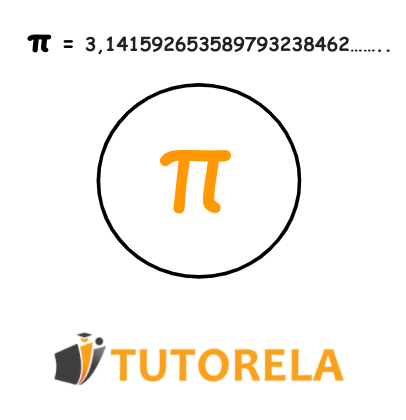Pi is a mathematical value, approximately equal to . This is the commonly used approximation for calculations.
Pi is symbolized by .
Examples of some mathematical expressions include :

Master circle parts with step-by-step practice problems. Calculate area, circumference using pi, radius, diameter. Includes sectors, chords, and real-world applications.
Pi is a mathematical value, approximately equal to . This is the commonly used approximation for calculations.
Pi is symbolized by .
Examples of some mathematical expressions include :

True or false:
The radius of a circle is the chord.
M is the center of the circle.
Perhaps
CD is a diameter, since it passes through the center of the circle, meaning it is the longest segment in the circle.
AB does not pass through the center of the circle and is not a diameter, therefore it is necessarily shorter.
Therefore:
Answer:
No
Which figure shows the radius of a circle?
It is a straight line connecting the center of the circle to a point located on the circle itself.
Therefore, the diagram that fits the definition is c.
In diagram a, the line does not pass through the center, and in diagram b, it is a diameter.
Answer:
Which diagram shows a circle with a point marked in the circle and not on the circle?
The interpretation of "in a circle" is inside the circle.
In diagrams (a) and (d) the point is on the circle, while in diagram (c) the point is outside of the circle.
Answer:
The number Pi represents the relationship between which parts of the circle?
To solve this problem, we will clarify the relationship between the constant and parts of a circle.
The number is a constant that relates the circumference of a circle (the perimeter) to its diameter. The formula for the circumference of a circle is given by:
where is the circumference, and is the diameter of the circle. This equation shows that is the ratio of the circumference of a circle to its diameter, which remains constant for all circles.
Therefore, indeed represents the relationship between the circle’s perimeter and its diameter.
Thus, the correct answer is: Perimeter and diameter
Answer:
Perimeter and diameter
All ____ about the circle located in the distance ____ from the ____ circle
To solve this problem, we will consider the parts of a circle and how they interplay based on the description provided in the incomplete sentence:
Now, let's fill in each blank systematically:
The first term 'Point' refers to all points lying on the perimeter of a circle. In the definition of a circle, each point on the circle’s circumference maintains an equal distance from its center.
The second term 'equal' pertains to how all these points are at an equal distance - which is the radius - from the center.
The third term 'center' specifies the reference point within the circle from which every point on the circle is equidistant.
Thus, the complete statement is: "All point about the circle located in the distance equal from the center circle."
The correct choice that completes the sentence is: Point, equal, center.
Answer:
Point, equal, center